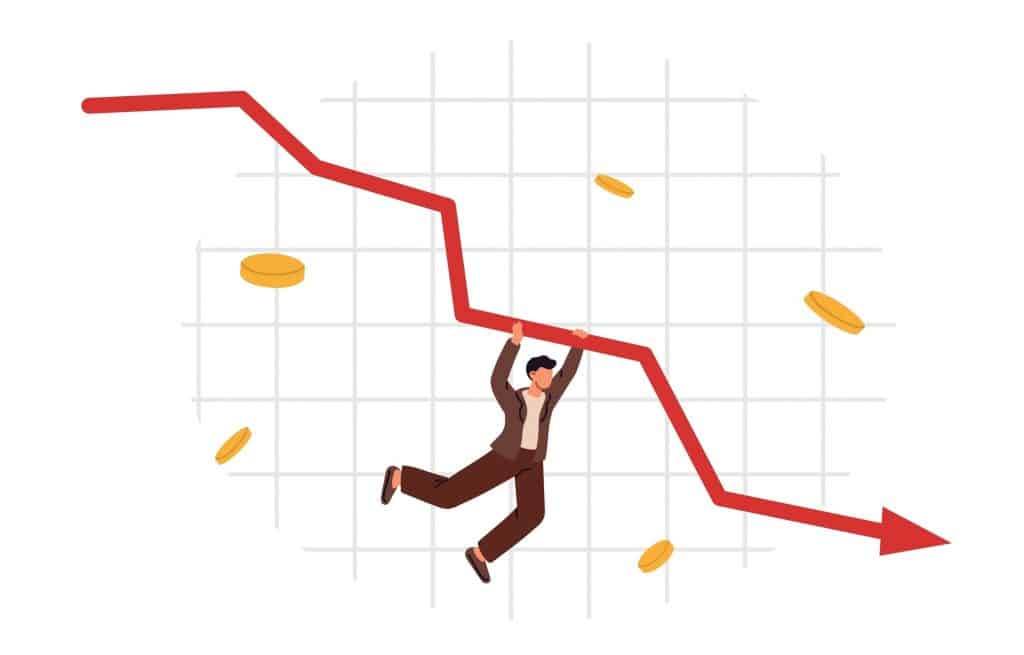When the industry started, it was spoken of like a big space that different entities of all sizes could participate in, and profit from. With the progression of time, we see just how hard it is for companies to survive; and the result that the cannabis industry is essentially run by just a few giants. What are some of these companies that dominate the field? And what issues are they having?
Trulieve and its hold on Florida (TRUL on CNSX)
Right now, Florida is a medical state only, but even so, it has one of the biggest cannabis industries in the US and beyond. Currently, the state is trying to get a ballot measure approved for the 2024 elections so the people of the state can decide for themselves if they want recreational weed. The effort is organized by the group Smart & Safe Florida, with major financial backing from non-other than the biggest cannabis company in the state: Trulieve.
Trulieve is a cannabis company based out of Tallahassee, Florida, which offers residents cannabis products and services, and which has operations in several states. Trulieve provided the original seed money to get the campaign started, and has since been filtering upwards of $25 million into the campaign. Why would the company get so intimately involved in politics? It makes a lot of sense, actually. A recreational market means more clientele, and for an industry faltering on the highest levels, this is beneficial for companies that need more sales.
As of a September 22nd writing in MJBizdaily, Trulieve operates a quarter of the state’s 475 medical dispensaries. To give an idea how much it brings in compared to competitors, consider that between the dates September 9-15, 2022, Trulieve sold approximately 81,698,333 mgs worth of THC products. Its closest sales competitor Curaleaf sold 35,641,674 mg. Trulieve did its share of selling through 120 dispensaries, with the company MÜV coming in second place in terms of dispensary numbers with only 59. Curaleaf made its second place sales from its 51 dispensaries.
Welcome to the site. Head over to the Cannadelics Weekly Newsletter and we’ll update you directly; which comes with cool offers on cannabis buds, vapes and smoking devices, edibles, cannabinoids (like delta-8), amanita mushroom products, and a ton more stuff. It’s good to feel good. We’ll help you get there!
This isn’t to say that despite its huge lead, that Trulieve isn’t having issues. At the end of 2022, Trulieve, like many other companies, had to make staff cuts. About 36 employees in its McKeesport Pennsylvania cultivation facility were let go. Within Florida, the company also made cuts in three other locations: Midway, Monticello, and Quincy. Though it has a large staff of approximately 8,000, this trend is not a new one in the industry.
Trulieve blamed these happenings on its own acquisition of the Arizona-based Harvest Health & Recreation, which happened in 2021. But the cuts also came right after the company reported a $115 million quarterly loss. While Trulieve rules the roost in Florida, it’s not the biggest cannabis company overall. It has a current market capital of $.9 billion according to April 21st, 2023 numbers via companiesmarketcap.com; but that puts it in 5th place overall.
Green Thumb Industries (GTII on CNSX)
There are different ways to judge the ‘biggest companies,’ and often different sites have different listings, even with the same parameters. Regardless, nearly all top spots are US and Canadian companies. The biggest cannabis company currently by market capital is Innovative Industrial; however, this company is a real estate investment company. For our purposes, we’ll look at market capital for companies involved with production and sales. Right now, the top place according to companiesmarketcap is held by Green Thumb Industries out of Chicago, Illinois.

With a current market capital of ~$1.68 billion, Green Thumb operates 77 dispensaries in 15 different states, which go under different names. It also has six cannabis brands of its own, with each brand geared toward specific consumer groups. The separation in names across states might make it seem to a consumer that they’re buying from a smaller, no-name brand. Consumers probably don’t always realize that they’re buying from a large, public company.
While Green Thumb is at the top of most lists, this doesn’t mean its not having problems. A simplywall.st article from earlier in April stated Green Thumb lost 56% of its stock value in the last year, leading to an earnings decline for shareholders. While the article pointed out that this is still 25% higher than three years ago, it also pointed out a 15% decline in just a month. In the week prior to the article, it went down 4.6%. Still a giant in the industry, yes, but one which is dangerously close to losing its spot.
Curaleaf (CURA on CNSX)
Curaleaf is one of the better known giants of the cannabis industry, and it, like most others, is having major issues. Currently, Curaleaf has $1.62 billion in market capital, making it the third biggest cannabis-related company in terms of market capital, and the second in terms of production and sales.
Curaleaf Holdings, Inc., is based out of Massachusetts, but trades on the Canadian Stock Exchange; it’s a producer and distributor of cannabis products. In 2019, upon acquisition of an oil brand, it became the largest retailer in the US. By 2020, it earned the status of largest brand worldwide, when it bought its main competitor Grassroots Cannabis; a purchase which brought Curaleaf into 23 states.
Internationally, the company has operations in several different countries. It acquired EMMAC Life Sciences Limited which was at the time, the biggest independent cannabis operation with vertical integration in Europe. This set up Curaleaf to grow, process (EU-GMP certified), distribute, and run R&D operations in UK/European markets. These include the UK, Germany, Spain, Portugal, and Italy.
But as all good things seem to trend down for cannabis, Curaleaf has also made some heavy waves with its missteps and losses. For one, it settled a bunch of lawsuits in early 2022 concerning tainted CBD products. This likely didn’t help, as things took a downturn in general in the past year. Right before Thanksgiving, Curaleaf let ~220 employees go, supposedly as “a part of an effort to control costs and drive efficiencies in the face of economic uncertainties ahead.”

Even more bad news for the company? In January the company announced it would close nearly every one of its dispensaries in California, Colorado, and Oregon, along with its cultivation and production facilities in those locations. More recently, it got a smack from New Jersey over issues with labor practices.
While it almost lost its license with the state to grow and sell marijuana (apparently because of a lack of notification to regulators about layoffs), the decision was reversed. This is not, however, the only time this company has landed in hot water over labor issues. Last year it was handed a citation by the National Labor Relations Board for resistance to working out deals with unionized workers.
Tilray (TLRY on Nasdaq)
Tilray is next on the list, and while this is one of the cannabis industry giants out of the US, its often referenced as being a Canadian company, because of the size of its Canadian branch. If it were, it would be the biggest cannabis company out of Canada, however, it was formed in the US, and is based out of New York City. Perhaps some of the confusion over where its from is because in 2020, it merged with Canadian company Aphria. It was also one of Canada’s first licensed producers. Regardless of where you consider it to be from, it has a market capital of about $1.42 billion for April 21st.
Tilray was the first cannabis company to trade on a major US stock exchange in 2018, when it opened on Nasdaq. At that time shares sold for $17, which went up to $214 later that year, just to come back down to $29 a year later. Prior to this in 2016, it was the first company to facilitate cannabis trials approved by Health Canada. The Canadian branch was the first company from Canada to export medical cannabis into the US.
But this company is yet another example of what’s going on with the giants in the cannabis industry. In January, 2023, Tilray announced it would cut ¼ of its staff in its Cantanhede, Portuagal location. Of this cut to the facility which produces medical cannabis products, a Tilray spokesperson told MJBizdaily,
“A total of 49 jobs will be affected in the production, manufacturing, quality, quality control (laboratory), cultivation, supply chain, facilities, warehousing, logistics, procurement, and IT. These changes, which are in line with Tilray’s rightsizing to meet the needs of the current economy and the state of legalization across medical and adult-use cannabis, will take place over the next three months.”

This isn’t out of nowhere. For the quarter ending November 30th, 2022, Tilray posted net losses of $61.6 million. Its new direction of layoffs and restructuring mirror nearly every other big cannabis producer and retailer in the market, most of which are giant companies. After all, if they’re having such a hard time, how would a mom & pop get off the ground at all?
Conclusion
Other well-known giants of the cannabis industry include Canopy Growth, Aurora, and Cresco Labs. Nearly every company on the companiesmarketcap list, including these, has a downward trajectory. So, while I included the trading information of these cannabis industry giants; my personal advice is to wait on making any investments, as these companies are not a sure bet at this point.
Hello readers. Thanks for joining us at Cannadelics.com; where we work hard to bring you the most interesting and important stories in the cannabis and hallucinogen landscapes. Stop by frequently to keep up with everything going on; and sign up to our Cannadelics Weekly Newsletter, for direct updates to keep you on top.
